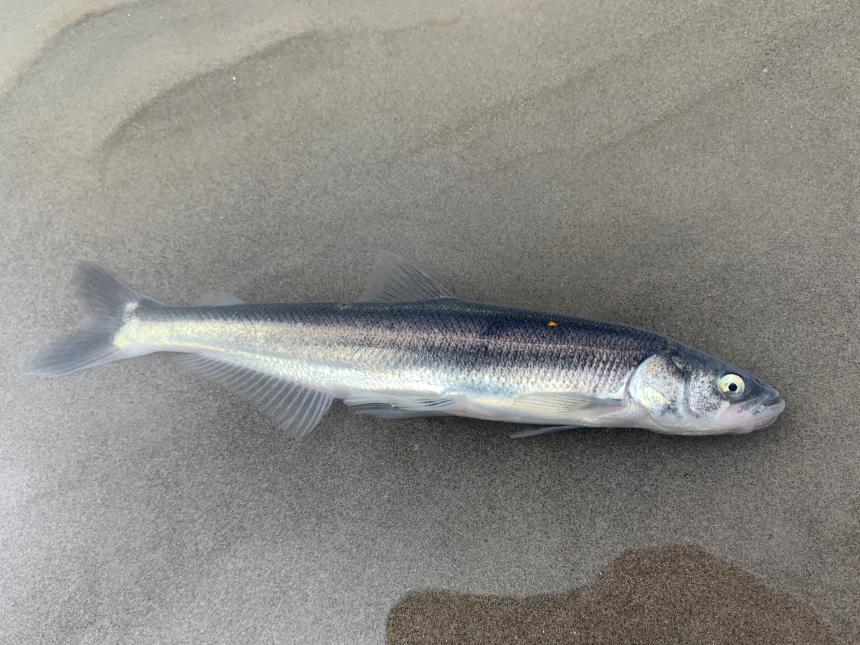Moderate
Climate vulnerability
Sensitivity to climate change
Moderate
Eulachon are vulnerable to climate-driven changes in both their oceanic rearing and freshwater spawning habitat. Eulachon exhibit site fidelity to specific spawning rivers, limiting the opportunity for adults and juveniles to move in response to changing nearshore-rearing and spawning habitat conditions. Eulachon spawn prior to the spring freshet, and egg hatch is correlated with peak spring flows to facilitate emigration. Precipitation changes, reduced snowpack, and earlier snowmelt all contribute to shifts in streamflow timing and magnitude, which could alter eulachon spawning time and/or cause earlier emigration. Early emigration could contribute to oceanic prey mismatch and eulachon mortality if larvae/juveniles arrive to marine rearing habitat prior to coastal upwelling initiation, which is projected to occur later in response to warmer ocean temperatures. Warming ocean temperatures may also affect eulachon forage opportunities and marine survival by affecting the abundance and composition of copepod communities, key prey for larval eulachon. Warming ocean temperatures have also facilitated the expansion of Pacific hake, which prey upon and compete with eulachon.
Exposure to climate change
Moderate
- Altered runoff timing and magnitude
- Increased water temperatures (fresh and ocean)

